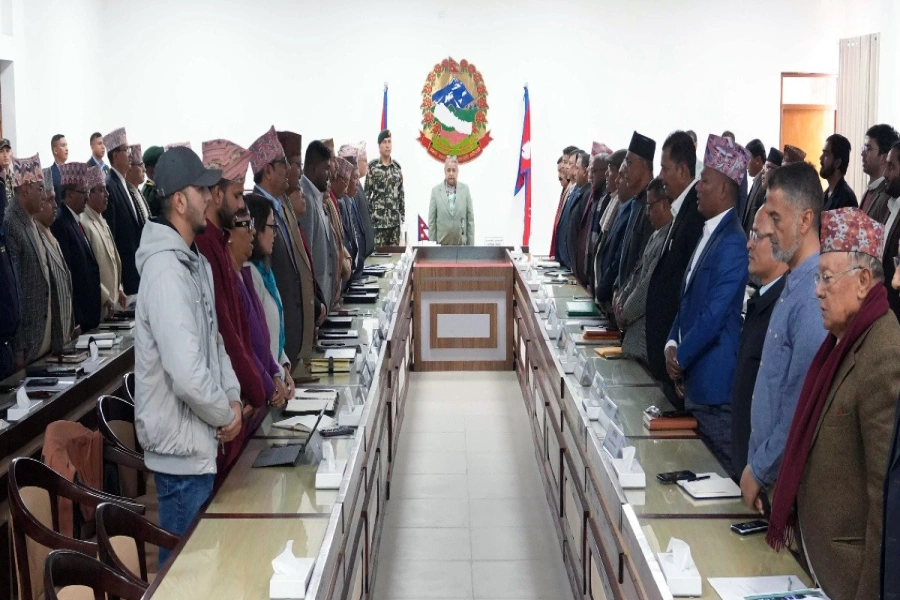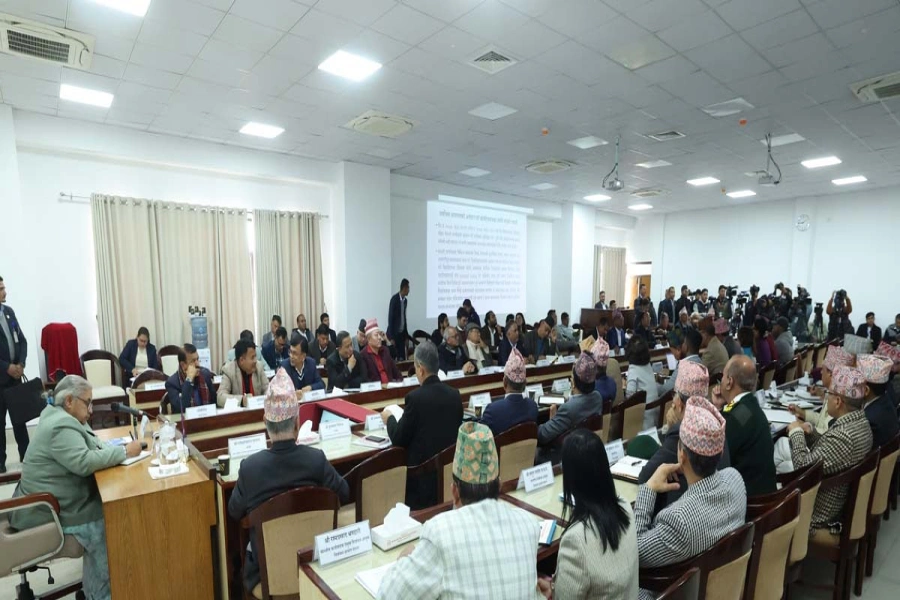Even as Covid-19 continues to impact livelihoods and economies in Nepal and across south Asia, every new year brings with it hope, challenge and opportunity.
Whether in Nepal, India or the United States, it might well have seemed like it has constantly been two steps forward and one step back as the coronavirus continues to evolve and so too the responses to it. Before the spread of the omicron variant, the Asian Development Bank in its September 2021 Asian Development Outlook Update had projected that Nepal's economy would grow by 4.1% in 2022, up from an estimated growth in 2.3% in 2021. <https://www.adb.org/news/nepal-economy-modestly-grow-fy2022>
As we welcome 2022, we take one last look back at Asia’s winners and losers in the year that was.
WORST YEAR: AFGHAN WOMEN & GIRLS
The chaotic U.S. withdrawal in August 2021 brought to an end an era of advancements in Afghanistan, and hunger and misery are on the rise again in one of Asia’s poorest nations. Still, even amidst the “worse off” some are even more “worse off.” Sadly we give “worst year’ in Asia to Afghanistan’s beleaguered and increasingly-at-risk women and girls.
The U.S. presence in Afghanistan—the “graveyard of empires”—was doomed in part by hubris and denial. But, a bright spot of the last 20 years was the dramatic improvement in lives and opportunities for Afghanistan’s women and girls.
A record number of Afghan girls went to school. Women ascended in public life, taking on roles as ambassadors, parliamentarians and civil society leaders. The “Afghan Dreamers”—an all-female, high school robotics team—won acclaim in international competitions.
Oscars 2019: Full list of winners

Now, under a back-in-power Taliban, the worst may still be to come for Afghan’s women and girls as the world looks away.
BAD YEAR: AUNG SAN SUU KYI
One-time de facto leader of Myanmar Aung San Suu Kyi found herself at year-end 2021 back where she has spent so many years—under detention by a military government—and takes the prize for ‘bad year” in Asia.
After a military coup, the Nobel laureate was detained, tried and found guilty on charges of incitement and breaking Covid-19 rules. Stalled democratic reforms and the persecution of Myanmar’s Rohingya Muslim minority, which she did little to stop, had already dimmed the democracy icon’s prospects of instituting lasting change in her country.
She though is not alone as the pandemic provided added cover for governments in Asia to restrict civil liberties and clamp down on protests. With her future now looking very much like her past, Suu Kyi offers up a case study of just how difficult it is for democracy to take root and thrive not only in Myanmar, but in all of Asia.
MIXED YEAR: OLYMPIC MOVEMENT IN ASIA
With the Tokyo 2020 Summer Olympics ultimately held in 2021 shining bright, and Beijing’s 2022 winter counterpart facing hurdles even before the games begin, the international Olympics sporting movement in Asia has had a decidedly mixed year.
Despite concerns over budgets and Covid-19, the delayed Tokyo Olympics provided a much needed distraction from the pandemic. Hmong American gold medalist gymnast Sunisa Lee dazzled the world. And athletes from host nation Japan won the third most gold medals, after athletes from the USA and China.
Now in the countdown to the Beijing 2022 Winter Olympics, the United States, United Kingdom, Australia and Canada have announced a diplomatic boycott of the games over China’s treatment of its Uyghur minority and other human rights concerns. A now vanished social media post by Chinese star tennis player Peng Shuai that was interpreted as alleging sexual misconduct by a former communist party leader had many posting #WhereIsPengShuai?—and raising prospects of more protests to come.
These developments have many questioning whether the International Olympic Committee had put profits over principle, and whether the organization can live up to its charter of “promoting a peaceful society concerned with the preservation of human dignity.”
GOOD YEAR: SOUTHEAST ASIA’S FINTECH SECTOR
Amid the gloom and doom of 2021, Southeast Asia’s fintech firms benefited from changing consumer habits and growing investor interest. Lockdowns throughout Southeast Asia forced many indoors and increasingly online, accelerating a trend that was already gaining steam in Thailand and elsewhere before the pandemic hit.
In the first nine months of 2021, Southeast Asia saw a record 80 fintech deals worth US$ 3 billion, exceeding what was invested in 2019 and 2020 combined and making it a very good year for the sector. One one-time unicorn that has integrated itself into the lives of Southeast Asia’s citizens is Grab—the “Everyday Everything App”—which evolved from a ride hailing app to a digital platform and superapp that offers financial services, deliveries and much more throughout the region. In the largest SPAC merger and public listing deal of its kind, Grab went public at a nearly $40 billion valuation in December.
Southeast Asia’s fintech players are also benefiting from venture capital shifting away from China as Beijing puts the brakes on the sector’s development and reins in one-time high-flying success stories, including Alibaba Group’s affiliate company Ant Group and founder Jack Ma.
It now seems we will need to look also to Southeast Asia, rather than Northeast Asia, for digital trends that will shape our future.
BEST YEAR: COLD WAR RHETORIC IN ASIA
Hard-pressed to find any one having had a great 2021, we give the dubious distinction of “best year” in Asia to the region’s new Cold War warriors. 2021 sadly proved to be a banner year for a return to Cold War rhetoric.
The election of U.S. President Bident proved to be no panacea for troubled superpower relations as China’s President Xi Jinping stayed home, and Chinese nationalists and state-owned media including now "retired" Global Times editor-in-chief Hu Xijin sought to push back against leaders from Australia, Canada and other nations whose views and values clashed with those of China.
Social media in 2021 amplified the nationalistic rhetoric of China’s “wolf warrior” diplomats, and bots and trolls made matters worse. The spread of Covid-19, China’s rapid military buildup and development of hypersonic missiles, militarization of the South China Sea and crackdowns in Hong Kong and China’s Xinjiang region as well as threats to Taiwan all heightened tensions.
Is the United States in a Cold War with China? The answer could be “yes,” “no,” or “maybe” depending on the day of the week. The answer not only has deep implications for China and the United States, but for Nepal, all the Indo-Pacific region and the world as nations navigate the U.S.-China relationship and look to a better 2022.






































